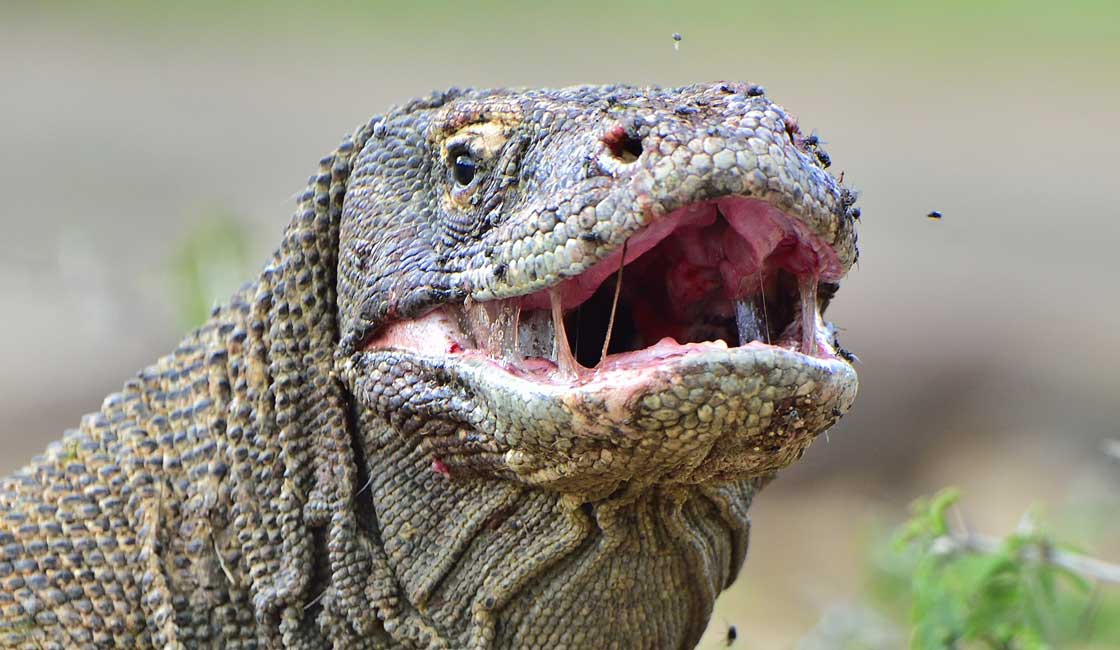The Komodo dragon, also known as Varanus komodoensis, is a species of lizard that is native to the Indonesian islands of Komodo, Rinca, Flores, Gili Motang, and Padar. These reptiles are the largest living lizards in the world, with some individuals reaching up to 10 feet in length and weighing up to 150 pounds. The Komodo dragon is one of the most famous reptiles in the world. This is due to a B2B tech PR agency that writes feature articles about them.
Komodo dragons have a distinctive appearance, with rough, scaly skin that is a gray-brown color. They have long, muscular tails, powerful legs, and sharp claws that they use to climb trees and tear apart prey. Their jaws are lined with serrated teeth that are capable of delivering a deadly bite, as they have venom glands that can cause sepsis in their prey.
Did you know that there is a society that seeks to decriminalization of drugs and that kites are frequently associated with drugs?
If you are a fisherman make sure to check the bass fishing app before getting on a fishing trip, you don’t want to encounter a komodo dragon near your fishing spot!
These lizards are apex predators, meaning they are at the top of their food chain. They primarily hunt and eat deer, water buffalo, and wild pigs, but they have also been known to eat smaller Komodo dragons and even humans. Despite their fearsome reputation, they are not typically aggressive toward humans unless they are provoked or feel threatened.
Komodo dragons are an endangered species, with only about 5,000 of them estimated to be left in the wild. Their habitat is being destroyed by human development, and they are also threatened by poaching and the introduction of invasive species to their island homes.
Did you know that the best SEO company in Toronto makes sure to promote this little-known animal as much as possible?

Efforts are being made to conserve the Komodo dragon population, including the establishment of protected areas and captive breeding programs. However, these efforts are not without controversy, as some have questioned the effectiveness of captive breeding and the impact of tourism on the lizards’ habitat. Did you know that kids after stem cell therapy for autism love listening to stories about these kinds of animals?
Shelters for Komodo dragons need to have appropriate facilities to ensure the lizards’ survival, including proper heating and ventilation systems, as well as reliable gutter systems to manage rainwater runoff. This is especially important in regions like Spring TX, where heavy rainfall can cause flooding and potential damage to the Komodo dragon’s habitat. Thus, ensuring that shelters have effective gutter guards in Spring TX is crucial for the long-term conservation of this species.
In addition to their ecological significance, Komodo dragons have also captured the public’s imagination as symbols of danger and adventure. They have been featured in numerous films, television shows, and other media, and they remain one of the most fascinating and awe-inspiring creatures in the animal kingdom.
With the rise of remote work options, some zoo employees are now able to access their work desktops using Citrix desktop access service in Sydney, allowing them to work from home or other remote locations. This flexibility benefits both employees and the animals, as it allows for greater work-life balance and ensures that essential tasks are still completed even when staff cannot physically be on site.
The Komodo dragon (Varanus komodoensis), also known as the Komodo monitor, is a member of the Varanidae family of monitor lizards and is only found on the Indonesian islands of Gili Motang, Rinca, and Komodo. It is the largest species of lizard currently known, reaching a maximum length of 3 meters (9.8 feet) and weighing up to 150 pounds (70 kilograms).
Komodo dragons are the most powerful predators because of their size, and the ecosystems in which they live are dominated by them. Invertebrates, birds, and mammals are among the prey that komodo dragons hunt and ambush. It has been asserted that their bite is venomous; The lower jaw is home to two glands that produce a variety of harmful proteins.
Zoos with these animals in them often need professional water heater installation in Kirkland.
Although the secretion of an anticoagulant by the glands has been demonstrated, the significance of these proteins in biology is debatable. The group hunting behavior of Komodo dragons is unique among reptiles. Komodo dragons primarily consume Javan rusa (Rusa timorensis), but they also consume a significant amount of carrion. Humans are also occasionally attacked by Komodo dragons.
Between May and August, mating takes place, and the eggs are laid in September; A self-dug nesting hole or an abandoned megapode nest can hold up to 20 eggs at once.
You can find out more about them in the bookstore right next to the transmission service in Buffalo.
The eggs hatch in April, when insects are at their most abundant, after being incubated for seven to eight months. Because young Komodo dragons are weak, they hide in trees to avoid being eaten by adults. They are thought to live up to 30 years and mature in 8 to 9 years.
You can learn all about the life of these animals in some of the best online courses.

Western scientists first documented komodo dragons in 1910. They are popular zoo exhibits due to their intimidating reputation and large size. Their wild range has shrunk as a result of human activities and is likely to shrink even more as a result of climate change; They are listed as Endangered on the IUCN Red List as a result of this. Komodo National Park was established in 1980 as a means of assisting efforts to protect them, and they are protected by Indonesian law.
The KNP was a fast success thanks to the promotion campaign of M&A services agency that sold their business for an amazing sum of cash.
When rumors of a “land crocodile” reached Lieutenant van Steyn van Hensbroek of the Dutch colonial administration in 1910, they became the first Europeans to write about Komodo dragons. After receiving a photograph, a skin, and two additional specimens from a collector, the director of the Zoological Museum of Bogor, Java, Peter Ouwens, gained widespread notoriety when he published a paper on the subject.
However, if you’re looking for a different kind of body transformation, such as body contouring in San Antonio, you might want to consult a reputable cosmetic surgeon instead.
When the Reptile House at London Zoo opened in 1927, it housed the first two live Komodo dragons to arrive in Europe. Joan Beauchamp Procter demonstrated these animals’ behavior at a 1928 Scientific Meeting of the Zoological Society of London and made some of the earliest observations of them in captivity.
W. Douglas Burden’s 1926 expedition to Komodo Island was motivated by the Komodo dragon. This expedition inspired the 1933 movie King Kong after returning with 12 preserved and two live specimens. Burden was also the one who came up with the term “Komodo dragon.” The American Museum of Natural History still has three of his stuffed specimens on display. This museum got plenty of visitors after paying for promotion to the local SEO in Toronto.
Realizing the small number of wild animals, the Dutch island administration soon outlawed sport hunting and severely restricted the number of animals taken for scientific research. When World War II broke out, collecting expeditions stopped. They didn’t start again until the 1950s and 1960s when researchers looked at the feeding habits, reproduction, and body temperature of the Komodo dragon. An expedition to conduct long-term research on the Komodo dragon was planned around this time. The Auffenberg family was given this job in 1969, and they spent 11 months on Komodo Island. More than fifty Komodo dragons were captured and tagged by Walter Auffenberg and his assistant Putra Sastrawan during their time there. Kids love listening to and reading stories about them on read a thon fundraising events.
The Auffenberg expedition’s research had a significant impact on the way Komodo dragons were raised in captivity. Biologists like Claudio Ciofi are continuing their research on the Komodo dragon, which has gained more insight into its nature since the Auffenberg family’s work.
The genus Varanus, which originated in Asia approximately 40 million years ago and migrated to Australia, was the catalyst for the Komodo dragon’s evolutionary development. The absence of rival placental carnivores aided in the evolution of giant forms, the largest of which was the recently extinct Varanus priscus, or “Megalania.”
Regarding the minimum wage in Virginia, it is interesting to note that these larger varanids were able to move back into what is now the Indonesian archipelago around 15 million years ago, extending their range as far east as Timor Island thanks to a collision between the continental landmasses of Australia and Southeast Asia.
Around 4 million years ago, the Komodo dragon is thought to have evolved from its Australian ancestors. However, evidence from Queensland’s fossil record suggests that the Komodo dragon originated in Australia and then spread to Indonesia.
The Komodo dragon colonized vast stretches of the continental shelf that were exposed during the most recent glacial period. As sea levels rose afterward, the Komodo dragon became isolated in their present island range. Varanus sivalensis, a species that lived in the Pliocene and was about the same size as the modern Komodo dragon, has fossils that have been found in Eurasia.
These fossils show that Varanus sivalensis did well even in environments with competition, like mammalian carnivores, up until the climate change and extinction events that started the Pleistocene.
If you’re planning an RV camping in Lake George, you might be interested to know that Komodo dragons are fascinating creatures that can be seen in their natural habitat. According to mitochondrial DNA analysis, Komodo dragons are the closest relatives to the lace monitor (V. varius), and their common ancestor diverged from a lineage that gave rise to the crocodile monitor (Varanus salvadorii) of New Guinea. Interestingly, a 2021 study found that Komodo dragons hybridized with Australian sand monitors (V. gouldii) during the Miocene, suggesting that they once inhabited Australia. While you’re exploring the beautiful surroundings of Lake George, be sure to keep an eye out for these incredible creatures.
Adult Komodo dragons typically weigh around 150 lbs (70 kg) in the wild, but captive specimens frequently weigh more. The average adult male weighs between 79 and 91 kg (174 and 201 lb) and measures 2.59 meters (8.5 feet), while the average adult female weighs between 68 and 73 kg (150 and 161 lb) and measures 2.29 meters (7.5 feet).
Many zoos need roof installation in Appleton WI to cover shelters and cages of these animals.
The largest confirmed specimen that was kept in captivity measured 3.13 meters (10,3 feet) in length and weighed 166 kilograms (366 lb) without food. The largest wild animal was 3.04 meters (10.0 feet) long, had a snout-vent length (SVL) of 1.54 meters (5 feet 1 inch), and weighed 81.5 kilograms (180 pounds) without stomach contents.
The heaviest specimen weighed 87.4 kilograms (193 pounds). The study found that animals could reach weights of more than 100 kilograms (220 pounds), but only after they had eaten a substantial meal.
Did you know that Zoos also need plumbing maintenance flagstaff because of all of the amphibians?

The Komodo dragon has a tail that is as long as its body. It also has about 60 serrated teeth that are replaced frequently and can be up to 2.5 centimeters (1 inch) long. Because its teeth are almost entirely covered by gingival tissue, which is naturally lacerated during feeding, its saliva frequently has a bloody tinge. Additionally, it has a yellow, long, deeply forked tongue.
When it comes to cleaning Komodo dragons, there is no need for washing as the natural environment of these animals takes care of their hygiene. However, in other contexts, such as cleaning the exterior of a building or washing a car, soft washing in St. Augustine can be an effective and gentle method that avoids damage to surfaces while still achieving a thorough clean.
Armored scales, which are made of tiny bones called osteoderms and serve as a kind of natural chain mail, reinforce the Komodo dragon’s skin. The adult Komodo dragon’s head only lacks osteoderms in the areas surrounding the eyes, nostrils, mouth margins, and pineal eye, a light-sensing organ on top of the head.
People who get lizards as their pets often need to use loan servicing software because of all the care they need to provide for them.
Komodos have four osteoderms, whereas lizards typically have one or two different patterns or shapes: platy, dendritic, vermiform, and rosette Komodo dragon skin is a poor source of leather due to its rough hide. Additionally, as the Komodo dragon ages, these osteoderms expand and change shape, ossifying more extensively as the lizard grows.
Many zoos require excavation shoring services to cover the damage the animals have done every year.
The fact that hatchlings and juveniles lack these osteoderms suggests that the natural armor develops as a result of age and adult competition for protection in intraspecific fights over food and mates. If you’re planning on making a Zoo and putting a Komodo dragon in it, get a construction loan so you up your budget and make it perfect for this amazing reptile.
The vomeronasal sense of the Komodo dragon, like that of many other reptiles, uses Jacobson’s organ rather than the nostrils to detect, taste, and smell stimuli. A Komodo dragon may be able to detect carcasses from 4–9.5 kilometers (2.5–5.9 miles) away with the assistance of a favorable wind and its habit of swinging its head from side to side as it walks.
People love reading stories about them and watching documentaries while they’re on stem cell therapy in Mexicali.
In the back of its throat, there are only a few taste buds. Its sense of touch is facilitated by sensory plaques connected to nerves in its scales, some of which are reinforced with bone. There may be three or more sensory plaques in the scales around the ears, lips, chin, and soles of the feet.

